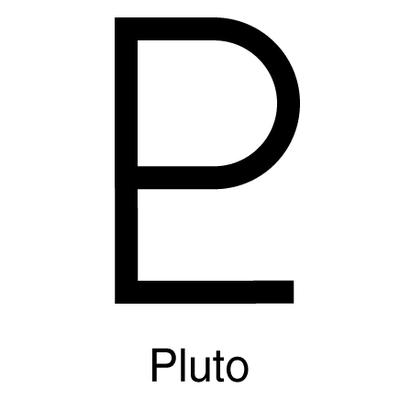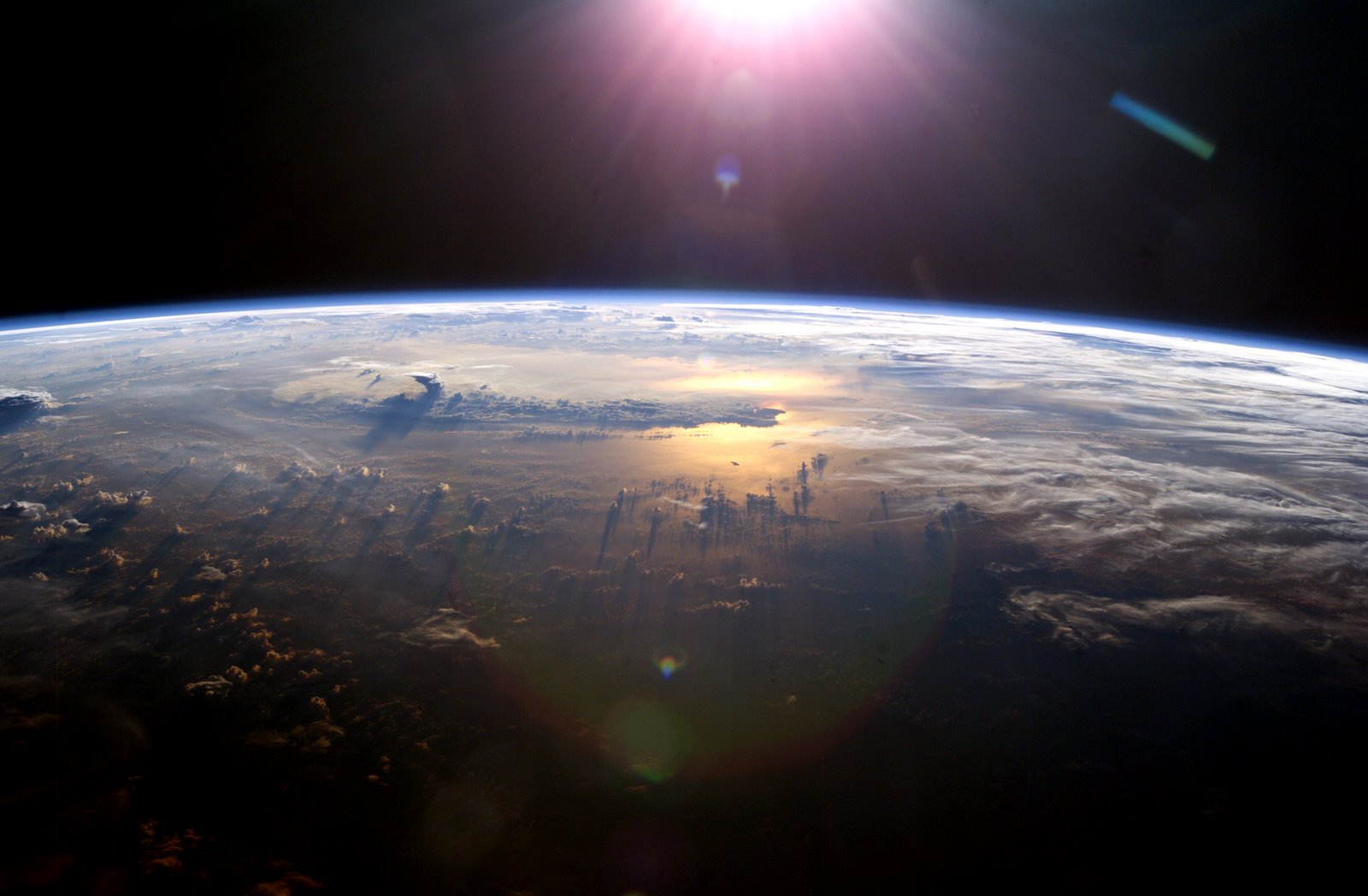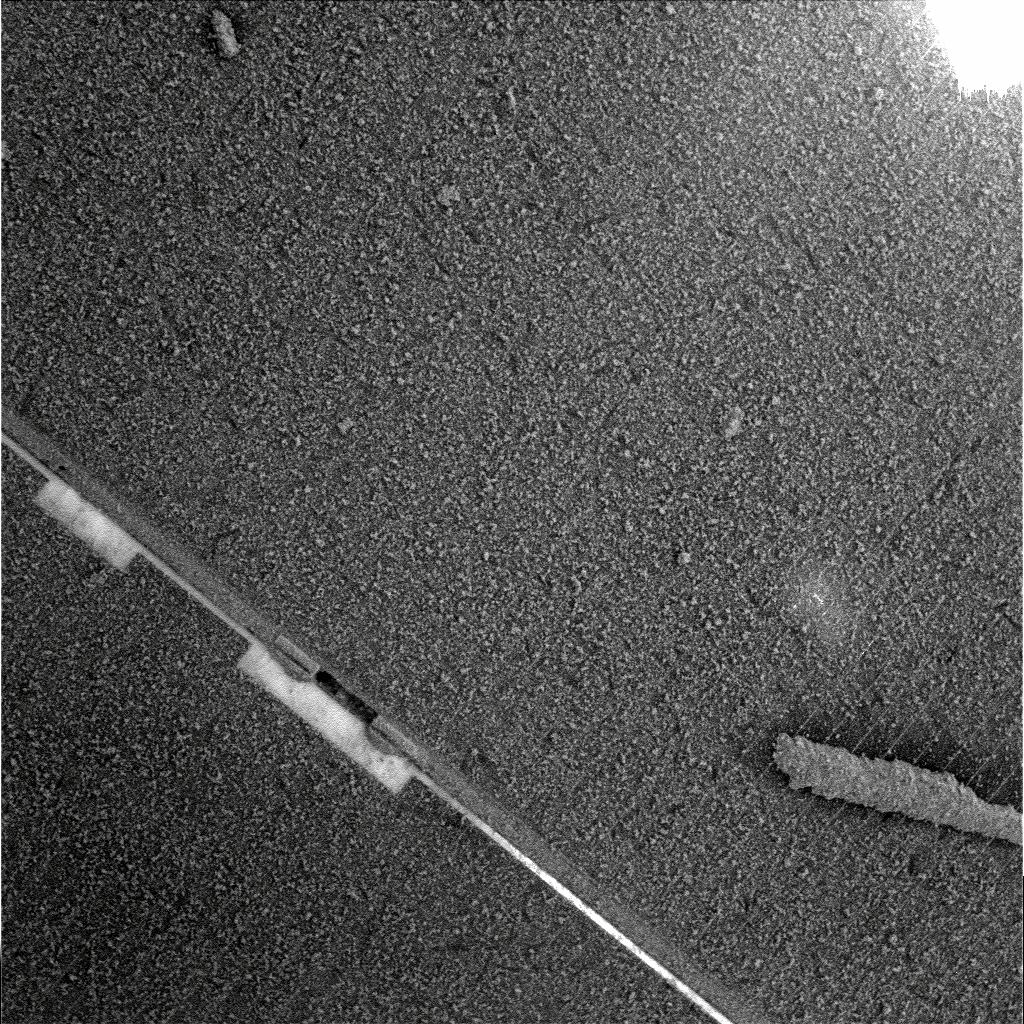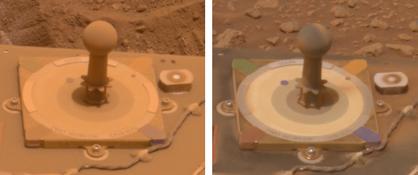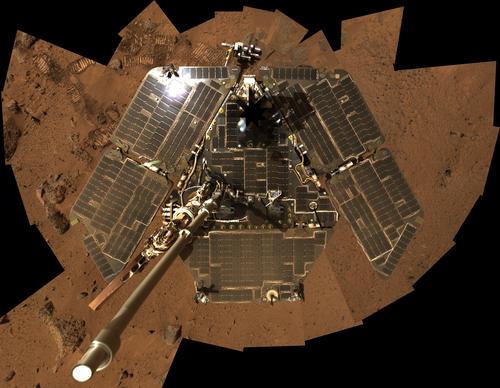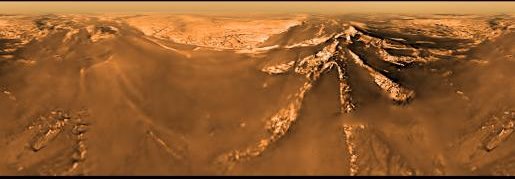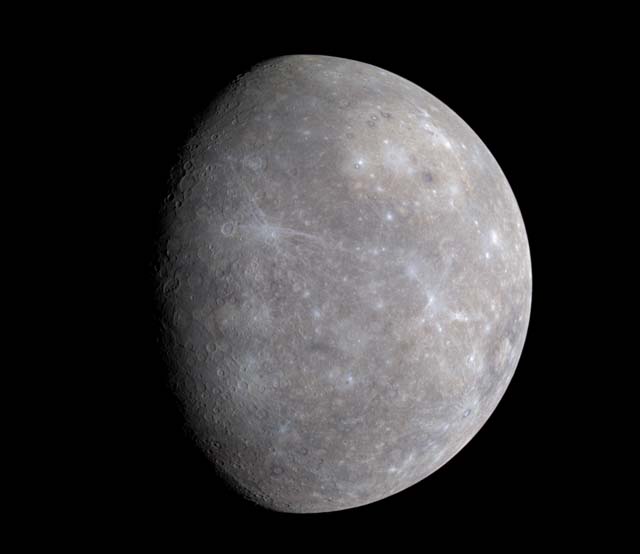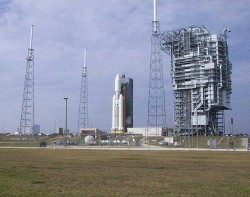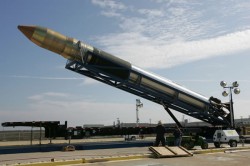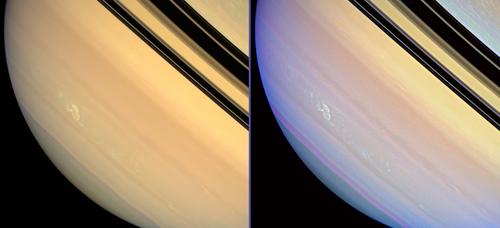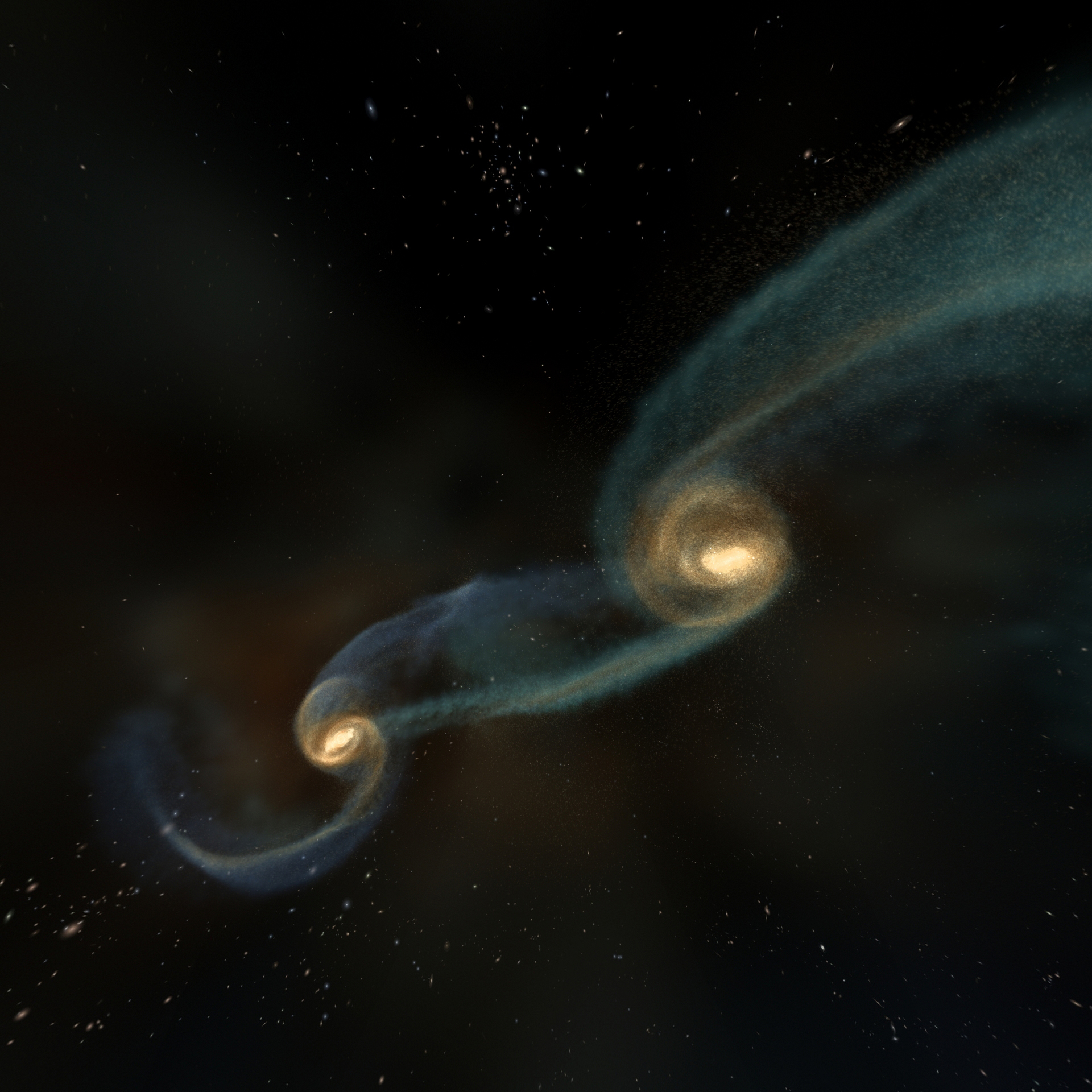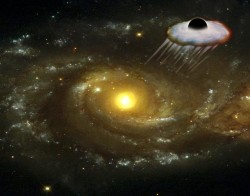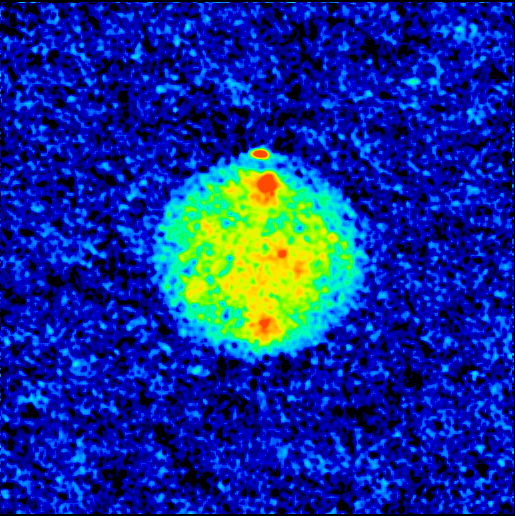The symbols of the planets, Moon and Sun are used in both astronomy and astrology. The symbol for Pluto is made from a monograph of the first two letters in the word PLuto. It’s also from the initials of the astronomer Percival Lowell, who predicted that the planet would be found through its gravitational influence on Neptune and Uranus. Of course, Pluto is not a planet anymore.
Gaia Hypothesis: Could Earth Really be a Single Organism?
Can a planet like Earth be considered a single living organism? After all, the human body is composed of hundreds of billions of bacteria, and yet we consider the human body to be a single organism. The Gaia Hypothesis (or popularly known as “Gaia Theory”) goes beyond the individual organisms living on Earth, it encompasses all the living and non-living components of Earth’s biosphere and proposes that the complex interacting systems regulate the environment to a very high degree (here’s a biosphere definition). So much so, that the planet may be viewed as a single organism in its own right. What’s more this hypothesis was developed by a NASA scientist who was looking for life on Mars…
When you stop to think about it, our planet does act like a huge organism. If you look at the interrelationship between plants and atmospherics, animals and humans, rocks and water, a complex pattern of symbiotic processes seem to complement each other perfectly. Should one system be pushed out of balance by some external force (such as a massive injection of atmospheric carbon dioxide after a volcanic event), other processes are stimulated to counteract the instability (more phytoplankton appear in the oceans to absorb the carbon dioxide in the water). Many of these processes could be interpreted as a “global immune system”.
The hypothesis that our planet could be a huge organism was the brain child of British scientist Dr James Lovelock. In the 1960’s when Lovelock was working with NASA on methods to detect life on the surface of Mars, his hypothesis came about when trying to explain why Earth has such high levels of carbon dioxide and nitrogen. Lovelock recently defined Gaia as:
“…organisms and their material environment evolve as a single coupled system, from which emerges the sustained self-regulation of climate and chemistry at a habitable state for whatever is the current biota.” – Lovelock J. (2003) The living Earth. Nature 426, 769-770.
So, Lovelock’s work points to interwoven ecological systems that promote the development of life currently living on Earth. Naturally, the statement that Earth itself is actually one living organism encompassing the small-scale mechanisms we experience within our biosphere is a highly controversial one, but there are some experiments and tests that have been carried out to support his theory. Probably the most famous model of the Gaia hypothesis is the development of the “Daisyworld” simulation. Daisyworld is an imaginary planet whose surface is either covered in white daisies, black daisies or nothing at all. This imaginary world orbits a sun, providing the only source of energy for the daisies to grow. Black daisies have a very low albedo (i.e. they do not reflect the sun’s light), thereby getting hot and heating up the atmosphere surrounding them. White daisies have a high albedo, reflecting all the light back out of the atmosphere. The White daisies stay cool and do not contribute to atmospheric warming.
Java applet of the Daisyworld simulation »
When this basic computer simulation runs, a rather complex picture emerges. In the aim of optimizing the growth of daisies on Daisyworld, the populations of white and black daisies fluctuate, regulating the atmospheric temperatures. When the simulation starts, there are huge changes in population and temperature, but the system quickly stabilizes. Should the solar irradiance suddenly change, the white:black daisy ratio compensates to stabilize atmospheric temperatures once more. The simulated Daisyworld plants are self-regulating atmospheric temperature, optimizing their growth.
This is an oversimplified view of might be happening on Earth, but it demonstrates the principal argument that Gaia is a collection of self-regulating systems. Gaia helps to explain why atmospheric gas quantities have remained fairly constant since life formed on Earth. Before life appeared on our planet 2.5 billion years ago, the atmosphere was dominated by carbon dioxide. Life quickly adapted to absorb this atmospheric gas, generating nitrogen (from bacteria) and oxygen (from photosynthesis). Since then, the atmospheric components have been tightly regulated to optimize conditions for the biomass. Could it also explain why the oceans aren’t too salty? Possibly.
This self-regulatory system is not a conscious process; it is simply a collection of feedback loops, all working to optimize life on Earth. The hypothesis also does not interfere with the evolution of species or does it point to a “creator”. In its moderate form, Gaia is a way of looking on the dynamic processes on our planet, providing an insight to how the seemingly disparate physical and biological processes are actually interlinked. As to whether Gaia exists as an organism in it’s own right, it depends on your definition of “organism” (the fact that Gaia cannot reproduce itself is a major drawback for viewing Earth as an organism), but it certainly makes you think…
Original source: Guardian
Spirit’s Dust Dilemma
Steve Squyres and the Mars Exploration Rover team knew from the beginning that dust could cause a problem for the rovers, Spirit and Opportunity. When a thick layer of dust coats the solar panels, it blocks the sunlight that generates power for the six-wheeled robots. In the summer of 2007 a huge dust storm blanketed Mars, and deposited a fair amount of dust on solar panels of both rovers. Spirit, especially accumulated a lot of dust on its solar array. Currently, only about one-third of incoming sunlight is able to penetrate dust on Spirit’s solar panels to be converted to electricity. As a result, Spirit is experiencing the lowest energy levels to date and accumulating a backlog of data waiting to be transmitted to Earth. If only a dust devil would come along!
Spirit’s solar array input has been approximately 240 watt-hours per Martian day, or sol (100 watt-hours is the amount of energy needed to light a 100-watt bulb for one hour). The skies in the area are now clear, which means additional dust shouldn’t be accumulating on the solar panels, and sunlight should be abundant. But clear skies also mean lower temperatures on the surface of Mars, increasing the bitter cold experienced by Spirit’s rover electronics module during the current Mars winter. Nighttime temperatures are creeping closer to the point where they will trigger the survival heaters, which draw a large amount of power.
The rover team has been using the strategy of keeping Spirit awake long enough each day to keep the electronics module sufficiently warm with heat from normal operations, providing more time for science observations. However, recently the team has done less science operations in order to allow Spirit’s batteries to recharge. The engineers are being creative in the trade-offs the team makes each day to keep Spirit going through the Martian winter. Another way they are conserving energy is by restricting the number of sols on which Spirit receives direct-from-Earth instructions via the rover’s high-gain antenna and transmits data to Earth via the Odyssey orbiter.
The MER team is hoping for a dust devil event to come and clear off the solar panels, like these dust devils did back in 2005.

This image shows the difference in the dust accumulation before and after the dust-cleaning event back in 2005.
And this is a self-portrait the rover took of its cleaned solar panels in 2005. Here’s hoping Spirit can be wiped clean again, and the sooner the better.
Original News Source: Mars Rover website
Shape Shifting Robot Can Reassemble After Crashing Apart
It’s fairly certain that the Mars Polar Lander and the Beagle lander crash landed on Mars, never to be heard from again. Well, what if crash landing was no problem? What if a robotic spacecraft could just reassemble and fix itself if there was a mishap on the way to another planet’s surface? That type of science fiction is getting closer to reality. A group of researchers from the University of Pennsylvania have developed a robot made of separate modules that can recognize each other and reassemble itself if they crash or get kicked apart. Maybe this could solve the problems of landing on Mars!
Except we haven’t figured out how to reassemble people, yet.
Take a look a the video. It’s pretty remarkable, although I have to admit, I had visions of the Terminator after watching it….
Original News Source: New Scientist
Where In The Universe?
The past couple of weeks we’ve had a ‘mystery’ image, and asked our readers to guess what world in our solar system was featured in the image. Most everyone seemed to enjoy it, and it was fairly popular, so we’ve decided to make it a regular feature. I was going to call it the ‘Wednesday Where in the World (and What World) Is This?’ but that’s just too long, not to mention too many W’s in one headline. So to brief it up, and since this is “Universe Today,” we’ve decided to call it “Where In The Universe?” Look for it every Wednesday.
Above is this week’s mystery image. If you keep an eye on the images being released by the various spacecraft traveling our solar system, you may have seen this one before. Remember, you have 8 planets, 169 known moons, a handful of dwarf planets and lots of asteroids in our solar system to choose from. Don’t cheat — make your guess before you click to continue…
This is an image of Saturn’s moon Titan, taken by the Huygen’s probe as it descended through Titan’s thick atmosphere and down to the surface. It’s a Mercator projection, or a flattened image of the curved globe of Titan. Don’t feel bad if you guessed Mars — the coloring and mountains are reminiscent of Mars, or even some areas on Earth. It’s exciting to know that Titan has those similar features, too.
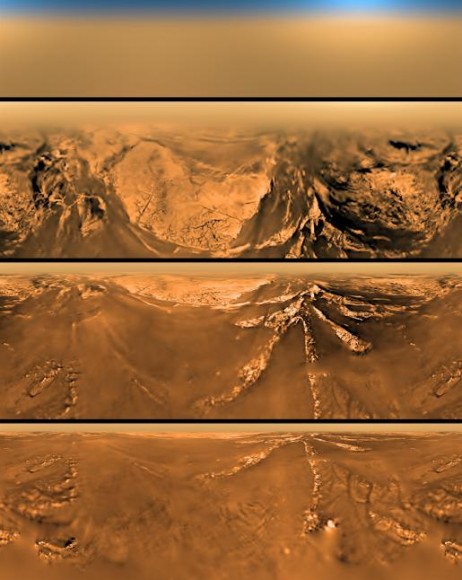
This is a full poster of images taken at four different altitudes from the descent imager/spectral radiometer on the European Space Agency’s Huygens probe, showing aerial views of the landing site. The images were taken on Jan. 14, 2005. Coming up in less than 12 days, Cassini will flyby Titan at a fairly close proximity, at about 1000 km (621 miles) above the surface of this interesting moon. The flyby will be on May 12, 2008.
Original Source: Cassini website
What Color is Mercury?
Unlike all of the other planets in the Solar System, Mercury is just bare rock. It does have a tenuous atmosphere, but ground and space-based observations see just the gray rocky color of Mercury. This gray color comes from Mercury’s molten surface that cooled and hardened billions of years ago after the formation of the Solar System.
There are no active tectonic or erosion processes happening on the surface of Mercury; it has remained unchanged for billions of years, reshaped only by the occasional meteorite impact. In the past, some of the basins were filled in by magma that flowed out of the planet when it still had an active geologic cycle. Geologists are fairly certain that there are no active volcanoes on Mercury any more, but it’s possible that there could still be the occasional lava flow. Fresh lava flows would appear as a different color on the surface of Mercury. Perhaps when NASA’s MESSENGER spacecraft enters orbit around Mercury, we’ll get a better idea of its colors. Certainly we’ll know more about its surface geology.
The photograph attached to this article provides one of the best true-color images of Mercury that we have. If you could fly over Mercury in your spacecraft, this is essentially what you’d see. The planet Mercury color is a dark gray surface, broken up by craters large and small. The color of Mercury’s surface is just textures of gray, with the occasional lighter patch, such as the newly discovered formation of crater and trenches that planetary geologists have named “The Spider”.
Mercury’s coloring is very similar to the Earth’s moon. In fact, when you’re looking at images of both objects, it’s very difficult to tell the two objects apart. Unlike the Moon, however, Mercury lacks the darker areas, or “seas”, that were created on the Moon by lava flows. Mercury’s color doesn’t have the variety that even the Moon has.
If you got here not asking what color is Mercury the planet, but what color is Mercury (the element), it’s silver, and a liquid at room temperature.
We have written many stories about Mercury here on Universe Today. Here’s an article about a side of Mercury never before seen by spacecraft, and here’s a story about the color of Mercury captured by NASA’s MESSENGER spacecraft during a recent flyby.
If you’d like more information on Mercury, check out NASA’s Solar System Exploration Guide, and here’s a link to NASA’s MESSENGER Misson Page.
We have also recorded a whole episode of Astronomy Cast that’s just about planet Mercury. Listen to it here, Episode 49: Mercury.
Reference:
New Science Findings From Messenger’s Third Mercury Flyby
NASA Science: Surprises from Mercury
NASA Solar System Exploration
Titan Launch Pad Tower Blown Up at Cape Canaveral (Gallery)
Cape Canaveral’s Titan launch pad gantry was demolished on Sunday. The tower was built in the 1990’s to support the US Air Force Titan 4 rocket program. The site has been used for NASA missions as well, including the launch of the Cassini-Huygens Saturn mission in 1997. Launch Complex 40 is being demolished and then refurbished to make way for the new SpaceX Falcon rocket launch facility. Now the gantry is rubble, the clean up operation can begin…

At 9am on Sunday, April 27th, 200 pounds of high explosives brought the Complex 40 mobile service tower crashing down. The tower was responsible for housing and preparing the highly successful Titan rockets for launch. Mainly used for military payloads, the Titan 4 series also sent the NASA Cassini probe on its way to Saturn on October 15th, 1997. A Titan 4 rocket was also used to send the ill-fated Mars Observer mission to the Red Planet on September 25th, 1992. Mission controllers lost contact with Observer when it was three days away from orbital insertion.
The gantry weighed nearly 6500 tonnes and was installed with an advanced satellite processing clean room. The tower supported a total of 17 launches, deploying sophisticated surveillance and communication satellites for the US government. Two of these launches were devoted to the NASA interplanetary missions. The last Titan 4 was launched three years ago, handing heavy launch duties over to the modern Atlas 5 and Delta 4 rocket systems. In its glory days Titan 4 was the largest rocket available carrying the heaviest payloads into space.
View the complete series of images taken of the demolition of the Complex 40 tower »
Now that the tower has been removed, Space Exploration Technologies (SpaceX) can begin to set up the commercial launch site as the East Coast base of operations for its Falcon 9 rocket system which is currently under development. But why can’t the tower be renovated for SpaceX launches? The Falcon 9 rocket system will be assembled horizontally and rolled to the launch pad shortly before launch; the gantry is therefore superfluous to the company’s needs at Complex 40.
However, not all the infrastructure of the site will be removed. The launch pad’s concrete deck and flame duct, water deluge system, electrical systems, lightning towers and instrumentation in the bay under the pad will be reused. The existing office space will also be renovated for SpaceX use. Since last October, SpaceX employees have been working at the site, removing any equipment not compatible with the Falcon system. The site will be up and running in time to begin supplying the International Space Station when NASA’s Space Shuttle fleet is retired in 2010. Complex 40 will live on, minus gantry, for NASA contracted launches and other commercial satellite orbital insertions by SpaceX.
Sources: SpaceX, Spaceflight Now
Cassini Watches Five-Month-Long Lightning Storm Rage on Saturn
Cassini scientists know for sure their spacecraft isn’t in Kansas anymore. Cassini’s been keeping an eye on a powerful electrical storm that’s been raging on Saturn for five months now, with lightning bolts 10,000 times more powerful than those found on Earth. But Cassini has also been busy flying by moons like Enceladus and Titan during this time, and therefore can’t constantly watch the storm. So amateur astronomers have been assisting the Cassini science team by monitoring this tempest in the “Storm Alley” region of Saturn. It’s no Great Red Spot, but it’s the longest lasting electrical storm ever detected in our solar system.
This prolonged storm is located in Saturn’s southern hemisphere–in a region nicknamed “Storm Alley” by mission scientists–where previous, but much shorter-lived lightning storms (if month-long storms can be called short!) were observed by Cassini. Saturn’s electrical storms are similar to thunderstorms on Earth, but they’re much bigger and longer lasting. Storms on Saturn have diameters of several thousand kilometers (thousands of miles), and radio signals produced by their lightning are thousands of times more powerful than those produced by terrestrial thunderstorms.
The storm was first detected on Saturn on Nov. 27, 2007. The electrostatic discharges were picked up by Cassini’s radio and plasma wave science instrument.
“The electrostatic radio outbursts have waxed and waned in intensity for five months now,” said Georg Fischer, an associate with the radio and plasma wave science team at the University of Iowa, Iowa City. “We saw similar storms in 2004 and 2006 that each lasted for nearly a month, but this storm is longer-lived by far. And it appeared after nearly two years during which we did not detect any electrical storm activity from Saturn.”
Amateur astronomers have kept track of the storm over its five-month lifetime. “Since Cassini’s camera cannot track the storm every day, the amateur data are invaluable,” said Fischer. “I am in continuous contact with astronomers from around the world.”
The long-lived storm will help provide information on the processes powering Saturn’s intense lightning activity. Cassini scientists will continue to monitor Storm Alley as the seasons change, bringing the onset of autumn to the planet’s southern hemisphere.
Original News Source: Cassini Press Release
Supermassive Black Hole Kicked Out of Galaxy: First Ever Observation
For the first time, the most extreme collision to occur in the cosmos has been observed. Galaxies are known to hide supermassive black holes in their cores, and should the galaxies collide, tidal forces will cause massive disruption to the stars orbiting around the galactic cores. If the cores are massive enough, the supermassive black holes may become trapped in gravitational attraction. Do the black holes merge to form a super-supermassive black hole? Do the two supermassive black holes spin, recoil and then blast away from each other? Well, it would seem both are possible, but astronomers now have observational evidence of a black hole being blasted away from its parent galaxy after colliding with a larger cousin.
Most galaxies in the observable universe contain supermassive black holes in their cores. We know they are hiding inside galactic nuclei as they have a huge gravitational dominance over that region of space, sucking away at stars orbiting too close. Recent observations of galactic cores show quickly rotating stars around something invisible. Calculating the star orbital velocities, it has been deduced that the invisible body they are orbiting is something very massive; a supermassive black hole of hundreds of millions of solar masses. They are also the source of bright quasars in active, young galaxies.
Now, the same research group who made the astounding discovery of the structure of a black hole molecular torus by analysing the emission of echoed light from an X-ray flare (originating from star matter falling into the supermassive black hole’s accretion disk) have observed one of these supermassive black holes being kicked out of its parent galaxy. What caused this incredible event? A collision with another, bigger supermassive black hole.
Stefanie Komossa and her team from the Max Planck Institute for extraterrestrial Physics (MPE) made the discovery. This work, to be published in Astrophysical Journal Letters on May 10th, verifies something that has only been modelled in computer simulations. Models predict that as two fast-rotating black holes begin to merge, gravitational radiation is emitted through the colliding galaxies. As the waves are emitted mainly in one direction, the black holes are thought to recoil – much like the force that accompanies firing a rifle. The situation can also be thought of as two spinning tops, getting closer and closer until they meet. Due to their high angular momentum, the tops experience a “kick”, very quickly ejecting the tops in the opposite directions. This is essentially what two supermassive black holes are thought to do, and now this recoil has been observed. What’s more, the ejected black hole’s velocity has been measured by analysing the broad spectroscopic emission lines of the hot gas surrounding the black hole (its accretion disk). The ejected black hole is travelling at a velocity of 2650 km/s (1647 mi/s). The accretion disk will continue to feed the recoiled black hole for many millions of years on its journey through space alone.
Supporting the evidence that this is indeed a recoiling supermassive black hole, Komossa analysed the parent galaxy and found hot gas emitting X-rays from the location where the black hole collision took place.
Now Komossa and her team hope to answer the questions this discovery has created: Did galaxies and black holes form and evolve jointly in the early Universe? Or was there a population of galaxies which had been deprived of their central black holes? And if so, how was the evolution of these galaxies different from that of galaxies that retained their black holes?
It is hoped that the combined efforts of observatories on Earth and in space may be used to find more of these “superkicks” and begin to answer these questions. The discovery of gravitational waves will also help, as this collision event is predicted to wash the Universe in powerful gravitational waves.
Source: MPE News
Discovery of Planet Mercury
Ancient people have known about the planets for millennia. It was only in the last few hundred years that new planets have been discovered that required a telescope to see. The earliest people thought of the planets as divine beings, moving across the heavens in unpredictable ways. If you’re wondering about the discovery of Mercury, though, it’s been known since prehistoric times, so there’s no way to really know who made the original discovery of planet mercury.
The five original naked-eye planets were Mercury, Venus, Mars, Jupiter and Saturn, and they had a significant impact on mythology, cosmology, and ancient astronomy. Any caveman could have made the Mercury discovery.
Mercury itself has been mentioned as early as the 2nd millennium BC by the Sumerians, and recorded by the Babylonians – they called the planet Nabu. The ancient Greeks associated Mercury with the god Hermes, who was thought to carry the Sun across the sky in his chariot. Later the Greeks called the planet Apollo when it was visible in the morning sky, and then Hermes in the evening sky. The Romans named the planet after the Roman messenger god Mercury, who was the same mythological figure as the Greek god Hermes.
The first telescopic observations were made by Galileo in the 17th century with his crude telescope; unfortunately, his crude instrument wasn’t powerful enough to see that the planet had phases, like Venus.
Mercury can occasionally be seen to pass directly in front of the Sun, as seen by Earth. This is called a transit. The last transit of Mercury happened in 2004, and was broadcasted worldwide across the Internet. But the first Mercury transit was seen in 1737 by John Bevis at the Royal Greenwich Observatory.
Until the 1960s, Mercury was thought to be tidally locked to the Sun, always facing one side towards our star. There were skeptics, who noted that if Mercury always faced one side towards the Sun, it should have a hot and a cold side, but research data didn’t back that up. Astronomers thought that maybe an atmosphere around Mercury kept the temperatures more even.
In 1962, Soviet scientists bounced the first radar signals off Mercury’s surface, and then American astronomers calculated that Mercury does rotate. It actually takes 59 days to turn once, and not the 88 days it takes to complete an orbit.
The first spacecraft to see Mercury up close was Mariner 10 back in 1974. Unfortunately, it was only able to see one hemisphere of the planet in total over the course of 3 flybys. Many of the missing pieces were filled in by NASA’s MESSENGER spacecraft, which completed its first flyby in January, 2008.
Descubrimiento del planeta Mercurio
References:
NASA Cosmic Distance Scales
NASA Solar System Exploration: Mariner 10

